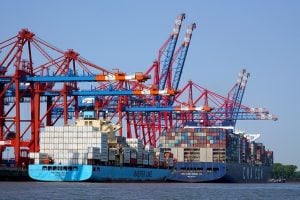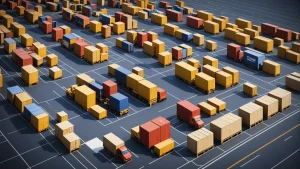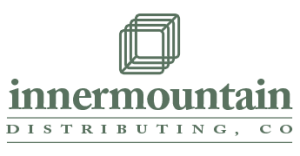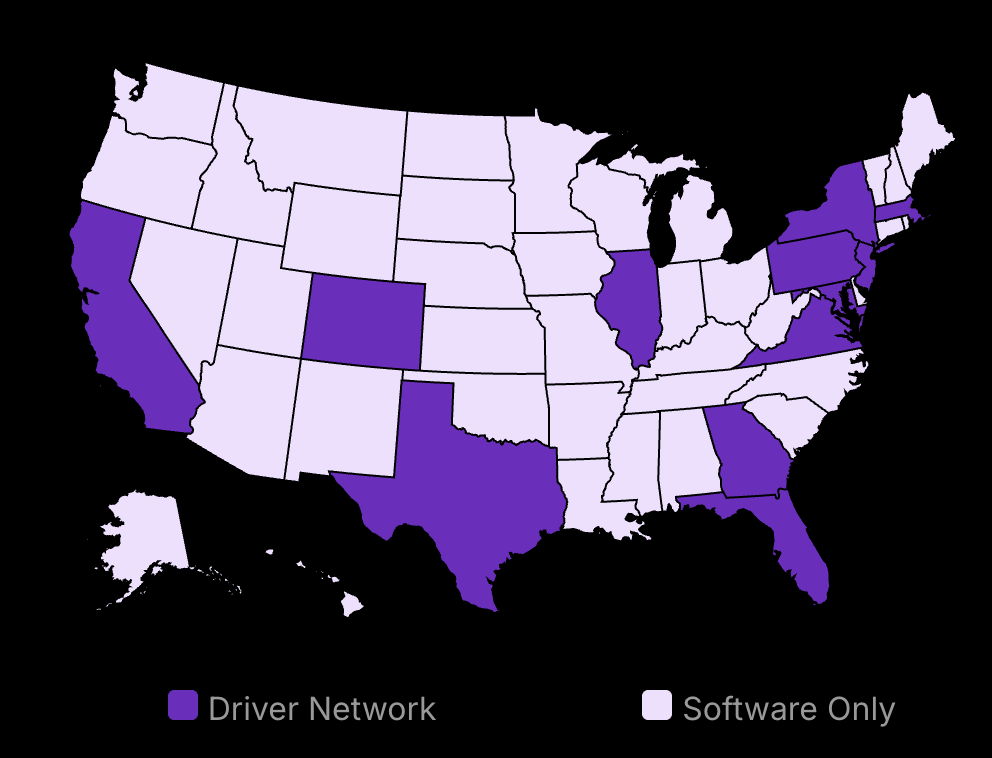In 2025, slow supply chain process aren’t just annoying—they’re business killers that impact overall business operations. A recent IBM study found that supply chain executives and supply chain managers in companies with an optimized supply chain model achieve 15% higher profit margins than competitors. Yet most businesses still operate with systems designed for a world that no longer exists.
Your supply chain is likely bleeding money right now. Those delays, miscommunications, and inventory problems aren’t minor inconveniences—they’re profit-draining wounds that grow larger every day they go untreated and ultimately prevent you from being able to reduce costs .
This guide shares exactly what worked for us and dozens of other businesses I’ve consulted with since, providing insights valuable for supply chain professionals. I’ll walk you through practical steps in supply chain planning to transform your supply chain from a liability into a competitive advantage.
The principles are simple. The implementation is straightforward. The results are remarkable.

Metrobi drivers are rated 4.97 out of 5
Trusted by local businesses for:
- Background-checked professionals
- Specialized in business deliveries
- Same drivers for consistency
- 4.97/5 average delivery rating
Implement Supply Chain Optimization Strategies
Improve supply chain speed by 30-50% with data-driven decisions
Reduce errors and costs through smart automation
Gain a competitive advantage by adopting industry-leading practices
Leveraging Data Analytics in Real-Time
Real-time data analytics transforms how supply chains operate in 2025, enhancing operations planning. Companies now capture information from every touchpoint—from warehouse sensors to delivery vehicles, including fuel consumption data. This constant stream of real-time data allows for immediate problem-solving, enhances product quality, and improves supply chain visibility rather than reactive approaches.
The key advantage is visibility. When you can see exactly what’s happening across your entire supply chain, you can spot bottlenecks before they cause delays. For example, if a sensor detects unusual temperature fluctuations in a refrigerated shipment, the system alerts managers instantly, not after the products arrive damaged. This proactive approach prevents waste and ensures faster delivery times.
Demand forecasting has also become more sophisticated. Modern analytics tools examine historical sales data alongside external factors like weather patterns, social media trends, and economic indicators. This comprehensive analysis helps companies predict exactly how much inventory they’ll need and when.
Automation in Inventory Management
Manual inventory management is slow, error-prone, and increasingly outdated. Automation changes this equation dramatically. From barcode scanning to fully autonomous robots, technology now handles routine tasks that once required human intervention, contributing to an efficient supply chain.
The robotics revolution is particularly significant, especially in sourcing raw materials and enhancing warehouse efficiency. In modern warehouses, autonomous mobile robots (AMRs) navigate aisles, select items, and transport them for shipping—all without human guidance. The efficiency gains are substantial: robots don’t need breaks, don’t make picking errors, and work at consistent speeds. With robotics in supply chains growing at an annual rate of 14% through 2025, companies that don’t adopt these technologies risk falling behind in achieving timely delivery.
Automated inventory systems also excel at maintaining optimal stock levels. These systems continuously monitor inventory, automatically reorder products when levels drop below predetermined thresholds, and adjust these thresholds based on seasonal patterns and sales trends.
Beyond Basic Automation: AI-Powered Inventory Management
Advanced AI systems are now taking inventory management to new levels, enhancing risk management processes. These systems don’t just follow rules—they learn and adapt. For example, AI algorithms can detect subtle patterns in consumer behavior that humans might miss, like how weather affects purchases in specific regions. This intelligence enables more effective resource allocation, better cash flow management, more accurate forecasting, and faster response times.
Aligning with Industry Best Practices
The fastest supply chains aren’t created in isolation—they learn from others. Benchmarking against industry leaders provides a roadmap for supplier management improvement that aligns with your supply chain process management scm process and business objectives.
You can start by identifying the key performance indicators (KPIs) that matter most to your business. In 2025, leading companies track cost reduction (35%), production service rate (29%), inventory turn (28%), and production time (27%) as their top daily performance indicators. In the planning phase, measuring your performance against these metrics helps pinpoint areas for improvement.
Industry associations and consultancies regularly publish reports on supply chain best practices. These resources offer valuable insights into what’s working for top performers. For example, the trend toward decentralized supply chains with localized production hubs is gaining momentum because it reduces transportation costs and shortens lead times.
The 7 C’s Framework for Supply Chain Process Excellence
When discussing how to improve supply chain performance, many professionals reference the “7 C’s of Supply Chain Management” framework. These principles provide a structured approach to enhancement:
Connection: Building strong relationships across the supply chain network
Communication: Ensuring clear, timely information flow between all parties
Cooperation: Working together toward shared goals
Coordination: Aligning activities for maximum efficiency
Collaboration: Deeper partnership involving shared planning and innovation
Capability: Developing the skills and resources needed for excellence
Control: Establishing effective governance and monitoring systems
Measuring Supply Chain Model Performance Effectively
To strengthen your supply chain process, you need to measure the right things. The five most commonly used measures of supply chain performance are:
Reliability: Percentage of perfect orders (on-time, complete, damage-free)
Responsiveness: Order fulfillment cycle time
Agility: Flexibility to respond to market changes
Costs: Total supply chain process management costs
Asset Management: Inventory turns and cash-to-cash cycle time
These metrics provide a balanced view of supply chain performance, covering both efficiency and effectiveness. By tracking these five areas and focusing on demand management, you can identify specific improvement opportunities that meet customer expectations and measure progress over time.
Streamline Logistics Operations for Speed
Speed up your supply chain process by optimizing transportation, warehousing, and visibility systems
Cut delivery times by 30-45% through focused logistics improvements
Gain a competitive advantage with smoother end-to-end operations
Improve Transportation Management
Transportation represents a critical link in your supply chain. Small improvements here can dramatically reduce delivery times and improve customer satisfaction. In 2024, over 76% of European shippers experienced supply chain disruptions, highlighting the urgent need for robust transportation management systems that optimize delivery routes. Expanding your reach beyond local markets requires efficient international logistics solutions. Understanding customs regulations, managing cross-border transportation, and coordinating with global partners are crucial for scaling your business. For detailed strategies and best practices, explore how effective international logistics helps companies grow beyond borders and handle complex supply chain challenges effortlessly.
The first step to improving transportation management is implementing specialized software. Modern transportation management systems (TMS) do more than track shipments—they optimize routes based on multiple factors, including traffic patterns, fuel costs, and delivery windows. You can start by evaluating your current transportation processes and identifying bottlenecks. Then select a TMS that addresses these specific issues.
Route Optimization Best Practices
When implementing route optimization, focus on these key actions:
Consolidate shipments when possible to reduce the number of required trips
Set up dynamic routing that adjusts in real-time based on traffic and weather conditions
Establish delivery time windows that balance efficiency with customer needs
Create contingency routes for high-priority shipments
Selecting Reliable Carrier Partners
Your transportation network is only as strong as your carrier relationships. To build a reliable carrier network:
Develop clear performance metrics for carriers (on-time delivery percentage, damage rates, communication responsiveness)
Establish regular performance reviews with major carriers
Create a carrier diversification strategy to avoid single points of failure
Negotiate contracts that include service-level agreements with specific performance targets
Consider implementing a carrier scorecard system that tracks performance across these metrics. This data-driven approach helps identify which carriers consistently meet your standards and which relationships need improvement.
Enhance Warehouse Efficiency by Sourcing Raw Materials
Warehouses often become bottlenecks in the supply chain process. The faster products move through your warehouse, the faster they reach customers. According to recent data, more than 80% of warehouses currently lack automation, which impacts their distribution channels indicating significant room for improvement in efficiency through technology adoption, crucial for effective scm .
You can start by implementing lean practices that minimize waste in your warehouse operations. This means identifying and eliminating activities that don’t add value to the customer. Common areas of waste include excessive movement of products, unnecessary handling, and inefficient picking routes.
Implementing Lean Warehouse Practices
To apply lean principles to your warehouse:
Conduct a time-motion study to identify wasted movement and handling
Reorganize your warehouse layout based on product velocity (how quickly items move through the facility)
Implement the 5S methodology:
Sort: Remove unnecessary items
Set in order: Organize remaining items for efficient access
Shine: Clean and maintain the workspace
Standardize: Create consistent procedures
Sustain: Maintain these practices through regular audits
Technology for Better Inventory Tracking
Inventory tracking technology forms the backbone of an efficient warehouse. Modern systems go beyond basic barcode scanning to enable real-time visibility and control:
Start with a warehouse management system (WMS) that integrates with your broader supply chain systems
Implement radio frequency identification (RFID) for faster, more accurate inventory counts
Consider automated storage and retrieval systems (AS/RS) for high-volume items
Deploy mobile scanning devices for warehouse staff to maintain real-time inventory updates
Focus on End-to-End Visibility
Supply chain speed depends on how quickly you can identify and respond to issues. Without visibility across your entire supply chain, problems can fester until they cause major disruptions. Only 3% of logistics service providers say they have no digital transformation strategy, showing a widespread industry focus on integrating systems for better visibility and communication.
Integrating Systems for Seamless Communication
System integration creates a unified view of your supply chain and enables faster decision-making. To achieve this:
Map your current systems and identify communication gaps
Implement API-based integration between core systems (ERP, WMS, TMS)
Consider a supply chain control tower solution that aggregates data from multiple systems
Ensure mobile access to critical information for team members regardless of location
Monitoring All Supply Chain Stages and Critical Phases
Visibility without action creates little value. To effectively monitor your supply chain:
Establish KPIs for each stage of your supply chain (procurement, production, warehouse, transportation, last-mile delivery)
Create dashboards that highlight exceptions and potential issues
Set up automated alerts for deviations from expected performance
Implement regular review processes to address systemic issues
Speed as a Competitive Advantage
In today’s market, speed within the supply chain refers to how quickly you can move products from raw materials to customer delivery. This includes both physical movement and information flow. Speed to market specifically measures how rapidly you can introduce new products through your supply chain while managing demand fluctuations.
To improve overall supply chain performance:
Measure your current cycle times across each stage of your supply chain process
Benchmark against industry standards and competitors
Set specific speed improvement targets for each major supply chain process
Create cross-functional teams responsible for speed optimization initiatives
Supply chain velocity—the rate at which inventory moves through your system—directly impacts both costs and customer satisfaction. Higher velocity means less capital tied up in inventory and faster customer deliveries, creating a double benefit for your business.
Digital technology integration, including AI and connectivity, ranks among the top supply chain trends for 2025, supporting real-time monitoring and rapid response to disruptions. Companies that excel at these practices typically see 20-30% improvements in order fulfillment speed.
Enhancing Supply Chain Process Efficiency with Technology
Technology adoption can cut supply chain delays by 20-50% when implemented correctly
Failed tech implementations often result from poor integration planning rather than the technology itself
Smart companies focus on cross-functional tech solutions rather than isolated system improvements
IoT Adoption for Connected Networks
Internet of Things (IoT) technology has transformed from a futuristic concept to an essential component in modern supply chains. Research from Gartner shows that by 2025, over 75% of successful supply chains will use IoT sensors for real-time tracking and monitoring—a significant jump from 47% in 2023. These networks of connected devices create a digital representation of finished products and the entire process of physical supply chain activities, which ensures the use of quality materials, enabling teams to make decisions based on actual conditions rather than assumptions.
The practical implementation of IoT in supply chains extends far beyond simple asset tracking. Forward-thinking companies have deployed temperature sensors on perishable goods that automatically adjust cooling systems to maintain optimal conditions. Motion sensors detect unusual handling of fragile items, triggering immediate notifications to prevent damage. Location trackers provide GPS coordinates accurate to within meters, allowing for precise ETAs and proactive rerouting when delays occur. This interconnected ecosystem generates approximately 1.5 terabytes of data per day for the average large supply chain.
Practical Implementation Steps for IoT Networks
The first step in IoT implementation involves mapping critical tracking points throughout your supply chain process. This requires cross-functional input from warehouse teams, transportation partners, and quality control departments. Next, selecting the right sensors depends on your specific needs—RFID tags for inventory tracking, environmental sensors for condition monitoring, or GPS trackers for location services. Companies that rush sensor selection without a thorough assessment often face compatibility issues later.
Integration with existing systems presents the biggest challenge. Your IoT data must connect with ERP systems, warehouse management software, and transportation management platforms. Companies like Maersk have invested in custom middleware solutions that translate IoT data into formats digestible by legacy systems, creating a unified data environment without replacing core infrastructure.
Blockchain for Transparency
Blockchain technology has matured beyond its cryptocurrency origins to become a practical tool for supply chain transparency. In 2025, the focus has shifted from theoretical applications to specific use cases where blockchain solves real problems. The most successful implementations address three critical areas: transaction verification, chain-of-custody documentation, and regulatory compliance.
The key advantage of blockchain in supply chains is its immutable ledger system. Once information is recorded, it cannot be altered without consensus from all network participants. This creates an unbreakable chain of data points tracking products from source to destination. According to IBM’s Supply Chain Institute, companies implementing blockchain report 80% fewer disputes with suppliers and customers regarding shipment details or contract terms. The technology essentially creates a single source of truth that all parties can trust without question.
When Blockchain Isn’t the Answer
Despite its benefits, blockchain isn’t suitable for every supply chain challenge. Projects focused only on internal visibility often fail to justify the implementation costs since traditional databases can provide similar functionality at a lower expense. The IBM Blockchain Pulse Report found that 62% of failed blockchain projects attempted to solve problems where no trust issues existed between parties.
Implementation costs remain significant despite decreasing over time. Beyond software expenses, organizational change management represents the largest investment. Teams need training on how to interact with blockchain systems and engage with reliable suppliers, and processes require redesign to capture data at the right points. For mid-sized companies, pilot programs focusing on high-friction areas provide the best entry point before full-scale deployment.
AI and Machine Learning for Predictive Supply Chain Model
Artificial intelligence has moved beyond the hype cycle to deliver tangible results in supply chain process management. The most significant impact comes from predictive capabilities that help companies anticipate problems before they occur, addressing an ongoing challenge in the supply chain management process.
The practical application of AI in supply chains focuses on three key areas: demand forecasting, risk prediction, and autonomous decision-making. Advanced algorithms now analyze not just historical sales data but also external factors like weather patterns, social media trends, and economic indicators to predict future demand with unprecedented accuracy. This allows companies to position inventory strategically before demand materializes, reducing both stockouts and excess inventory situations.
Risk prediction represents the fastest-growing application area for AI in supply chains. Systems now monitor global news feeds, social media, weather patterns, and political developments to identify potential disruptions before they impact operations. Companies receive automated alerts about port congestion, weather events, or political unrest that might affect specific shipments, helping them navigate operational challenges and allowing them to develop contingency plans proactively rather than reacting after delays occur.
Implementation Failures and Lessons Learned
The past year revealed important lessons about AI implementation failures. The most common issue occurred when companies treated AI as a black-box solution without proper integration into existing decision processes. A major retailer spent $12 million on an advanced demand forecasting system that produced highly accurate predictions but failed to impact operations because planners didn’t trust or understand its recommendations. Successful implementations now focus equally on the technical solution and the human factors affecting adoption, ultimately leading to significant cost savings.
Data quality remains the biggest predictor of AI success or failure. Companies that invested in data governance before AI implementation reported 3.7 times higher ROI than those that rushed to implement algorithms without addressing underlying data issues.
Robotics and Automation for Physical Operations
Physical automation represents the fastest-growing technology segment in supply chain process operations, with investment increasing 47% year-over-year according to Logistics IQ. The focus has shifted from large, expensive fixed systems to flexible, scalable robots that can be deployed quickly and reconfigured as needs change. This shift makes automation accessible to mid-sized companies that previously couldn’t justify the capital expense.
Autonomous mobile robots (AMRs) have transformed warehouse operations by taking over repetitive movement tasks. Unlike fixed conveyor systems, these robots navigate dynamically around obstacles and people, creating flexible fulfillment patterns that adapt to changing priorities. Companies report productivity improvements of 2-3x compared to manual operations, with the added benefit of scalability during peak periods when additional robots can be deployed temporarily.
The key success factor for robotics implementation is starting with clearly defined use cases rather than general automation goals. Companies that identify specific bottleneck processes and apply targeted automation solutions see ROI within 12-18 months, compared to 3+ years for broad automation initiatives. For example, focusing robots on long-distance transport within warehouses while keeping humans for precision picking often delivers better results than attempting to automate entire fulfillment processes at once.
The Human Side of Automation
The most successful automation projects prioritize human-machine collaboration rather than replacement. A study by Deloitte found that companies emphasizing lean supply chains and collaborative approaches between workers and robots saw 22% higher productivity gains than those focused purely on labor reduction. This approach also reduced implementation resistance and accelerated adoption rates among existing staff.
Training programs represent a critical success factor often overlooked in technology budgets. Companies should allocate 15-20% of their automation investment toward worker training and process redesign.
Cloud-Based Supply Chain Platforms
The shift toward cloud-based supply chain management (SCM) platforms has accelerated dramatically, with 82% of companies now using some form of cloud solution compared to 57% in 2022. These platforms provide three critical advantages: rapid deployment, continuous updates, and easy integration with partner systems. The result is a more agile supply chain capable of adapting to changing conditions without lengthy IT projects and effective enterprise resource planning.
The most significant benefit comes from standardized data models that facilitate information sharing across organizational boundaries. Traditional supply chain software created data silos that required complex integration efforts to connect. Modern cloud platforms share common data structures that allow information to flow seamlessly between manufacturers, logistics providers, and retailers. Companies report 37% faster onboarding of new suppliers and 42% quicker response to disruptions when using cloud platforms.
Implementation success depends largely on choosing the right deployment approach. Companies that attempt “lift and shift” migrations of existing processes to the cloud without redesign report significantly lower satisfaction than those that use cloud migration as an opportunity to reimagine processes. The key question to ask: “How would we design this process if we were starting from scratch today?” This approach prevents simply moving inefficient processes in the chain process to a new technology environment.
How Is Supply Chain Management Important For Business
As we look at the supply chain process landscape in 2025, speed and reliability aren’t just nice-to-have features—they’re essential for business survival. By focusing on data analytics, automation, and strong supplier relationships, you can build a supply chain that responds quickly to market shifts and delivers consistently.
The steps we’ve covered—from implementing real-time analytics to enhancing warehouse efficiency and adopting IoT technology—create a foundation for lasting improvement. It is best to start with one area where you’re experiencing the most friction, apply these principles, and expand from there.
Remember that making your supply chain process faster isn’t a one-time project but an ongoing commitment to excellence. Each improvement builds on previous ones, creating a compounding effect that transforms your entire operation.
The businesses that thrive in today’s competitive environment aren’t those with perfect supply chains—they’re the ones committed to continuous improvement. By taking action on these strategies today, including sustainable practices, you position your business to meet customer demands faster, adapt to disruptions more effectively, and ultimately gain a significant competitive edge. Another crucial aspect to consider is optimizing your supply chain order management. Efficient order management processes ensure that customer orders are accurately captured, processed, and fulfilled with minimal delay, which directly impacts customer satisfaction and operational costs. For businesses seeking to refine these practices, exploring effective techniques in order processing, status tracking, and exception handling can create substantial improvements. You can learn more about advancing your supply chain order management strategies by visiting this detailed resource on enhancing efficiency in your business operations.



























